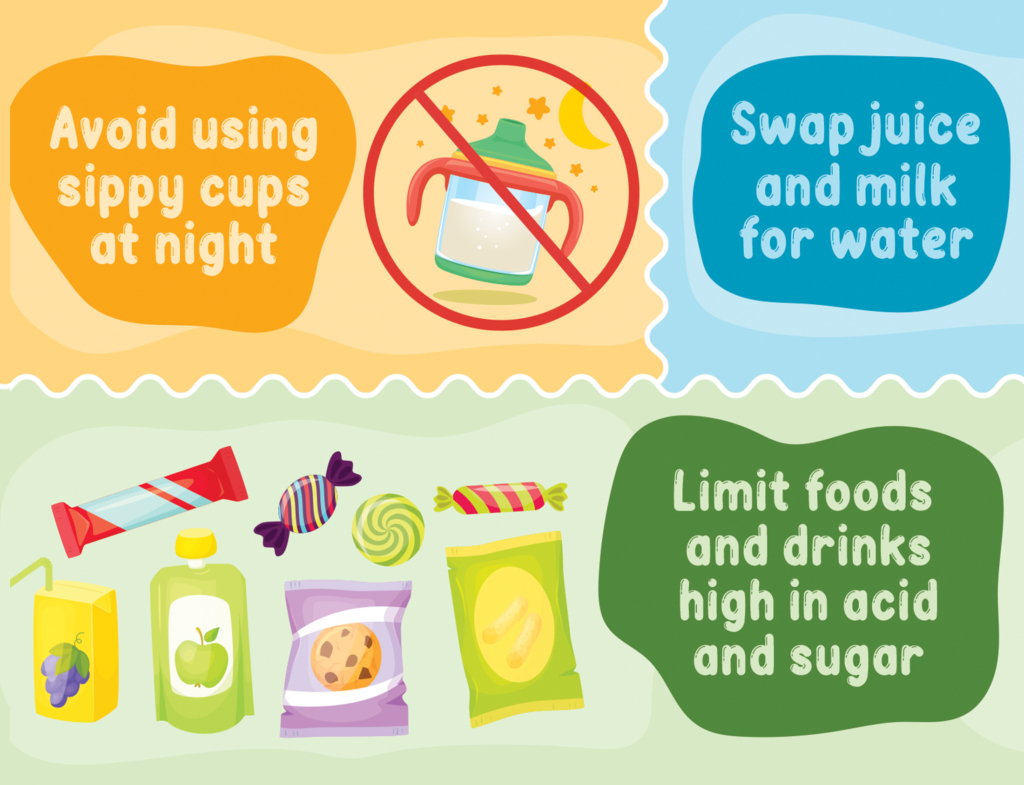By CPNHS Lead Dental Hygienist Lauren Bingham, RDH, BSDH

February is National Children’s Dental Health Month, and at Citizen Potawatomi Nation Health Services, the staff in the dentistry department work hard to give parents and kids the knowledge they need to ensure children’s teeth come in strong. Good dental health as an adult starts during adolescence, and knowledge and ritual are vital to long-term health.
Tooth decay is the leading chronic infectious disease among children, and according to the Centers for Disease Control and Prevention, more than 1 in 5 children between the ages of 2 and 5 have at least one cavity in their baby teeth. Primary dentition (baby teeth) are useful for only a small percentage of our lives yet the most susceptible to decay due to the nature of developmental integrity caused by the sugary affliction we cause.
Eating excess added sugars, particularly in the form of sweetened beverages, remains a leading cause of tooth decay in the U.S. for children. Milk, juice, Kool-Aid and even Gatorade are among the commonly forgotten contributors to dental decay.
Nutritional tips and tricks for parents to reduce childhood cavities:
- Drinking bottles and or sippy cups at night. Avoid making it a habit after tooth eruption begins.
- Sipping and drinking juice and milk all day. Try substituting water for sugary drinks; it’s vital in a lot of ways!
- Fruit snacks, granola bars, crackers, chips, applesauce packets, candy, gum, ice cream and fruits all create copious amounts of plaque that contribute to easy decay.
- Soda, milk, juice, energy drinks, Gatorade and any other high acid, high sugar drinks bathe teeth in decay-causing formulations.
Home care considerations:
- Always brush twice a day and floss each night before bed. Two minutes is key. Floss picks are acceptable as long as we work to reach the deepest part of the gum pocket, which allows for plaque removal from the base of the tissue around the tooth. Gently seesaw the floss between the teeth, hugging the tooth in a “C” shape. Rub up and down for two or three strokes with moderate pressure applied. Plaque is sticky, and gentle rubbing won’t be effective.
- The most important brushing time is at night. Human bodies go through a heal and protect process at night with our cellular turnover. Skipping nighttime brushing, especially in children, increases the chance of decay by 10 times more than if you brush only in the mornings.
- Habits are key, and learning is innate. For children under the age of 8, we suggest brushing together with your child at bedtime to ensure long-term habit formation.
- Children under the age of 6 generally cannot effectively brush. Therefore, it is recommended to let them brush first but always insist on a follow-up brushing from the adult. Focus brushing on the gums, using a gentle back-and-forth sweeping motion, and access both the cheek side and tongue side of the teeth.
- Begin brushing before tooth eruption even begins. A gentle, damp wash cloth on the gums at bathtime is a great way to introduce the intraoral habit of brushing.
- Say no to anything but water after bedtime brushing has commenced; be consistent.
- For older children, the best time is now to set the habits. If they aren’t learned earlier, there is still time to intervene. Set a nightly alarm for the same time and send them to brush their teeth when it goes off. Now is now, not later. It takes six weeks to develop new habits. Stick to it!
- The key is always no eating or drinking after nighttime brushing. It is bedtime.
Find out more about Citizen Potawatomi Nation Health Services at cpn.news/health.
